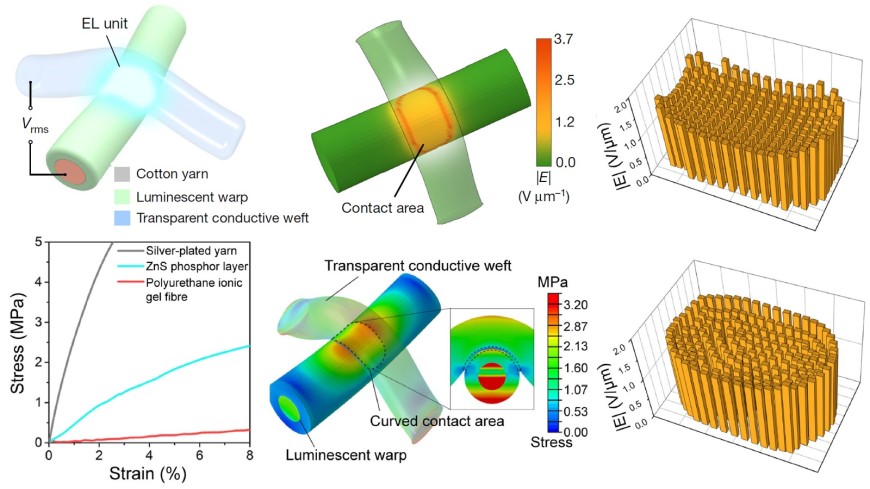Large-area display textiles integrated with functional systems
New Cooperative work in “Nature”
2021/03/10

Authors: Xiang Shi, Yong Zuo, Peng Zhai, Jiahao Shen, Yangyiwei Yang, Zhen Gao, Meng Liao, Jingxia Wu, Jiawei Wang, Xiaojie Xu, Qi Tong, Bo Zhang, Bingjie Wang, Xuemei Sun, Lihua Zhang, Qibing Pei, Dayong Jin, Peining Chen & Huisheng Peng
Displays are basic building blocks of modern electronics. Integrating displays into textiles offers exciting opportunities for smart electronic textiles—the ultimate goal of wearable technology, poised to change the way in which we interact with electronic devices. Display textiles serve to bridge human–machine interactions offering, for instance, a real-time communication tool for individuals with voice or speech difficulties. Electronic textiles capable of communicating, sensing and supplying electricity have been reported previously. However, textiles with functional, large-area displays have not yet been achieved, because it is challenging to obtain small illuminating units that are both durable and easy to assemble over a wide area. Here we report a 6-metre-long, 25-centimetre-wide display textile containing 5 × 105 electroluminescent units spaced approximately 800 micrometres apart. Weaving conductive weft and luminescent warp fibres forms micrometre-scale electroluminescent units at the weft–warp contact points. The brightness between electroluminescent units deviates by less than 8 per cent and remains stable even when the textile is bent, stretched or pressed. Our display textile is flexible and breathable and withstands repeated machine-washing, making it suitable for practical applications. We show that an integrated textile system consisting of display, keyboard and power supply can serve as a communication tool, demonstrating the system’s potential within the ‘internet of things’ in various areas, including healthcare. Our approach unifies the fabrication and function of electronic devices with textiles, and we expect that woven-fibre materials will shape the next generation of electronics.
In this work, H.P. and P.C. conceived and designed the research project. X. Shi., Y.Z. and P.Z. performed the experiments on the display textile, keyboard and integration systems. J.S., Y.Y. and Q.T. performed the simulation. Z.G. performed the experiments on photovoltaic textiles. M.L. and J. Wang performed the experiments on energy storage fibres. J. Wu and B.W. performed the durability test. X. Shi, Y.Z., P.Z. and X.X. analysed the data. B.Z., X. Sun., L.Z., Q.P., D.J. and all other authors discussed the data and wrote the paper.



